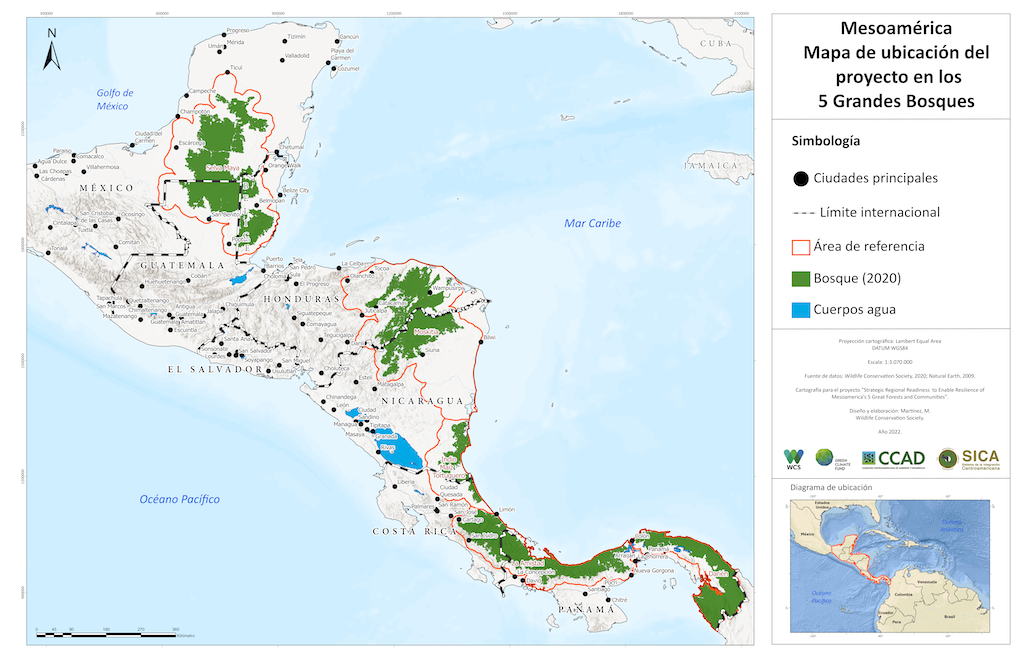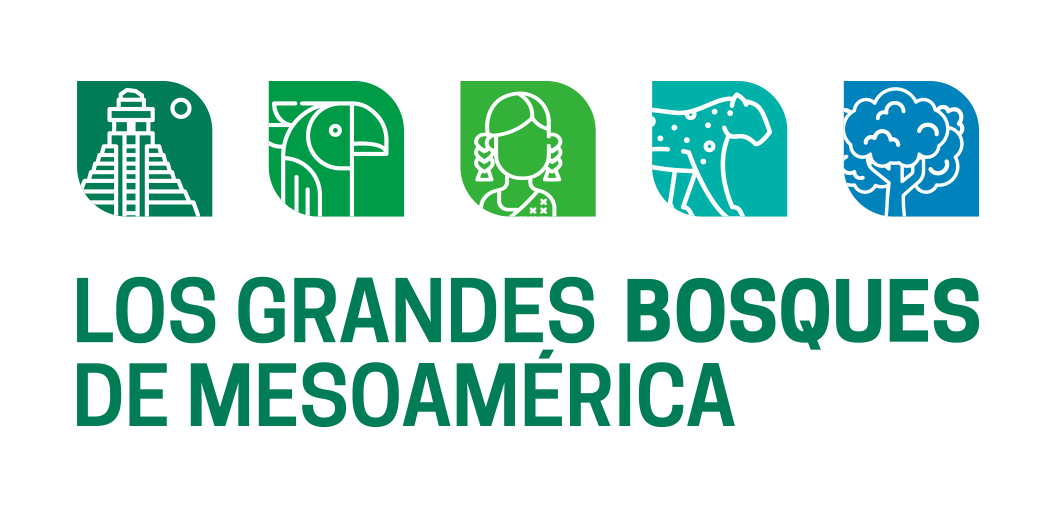With financing from the Green Climate Fund (GCF) and the European Union, with a long-term vision that involves Indigenous Peoples, governments and partners such as the Central American Commission for Environment and Development (CCAD), Mesoamerican Alliance for Peoples and Forests (AMPB), Re: Wild, the Bioversity-CIAT Alliance and the ongoing work of the Wildlife Conservation Society (WCS), the transboundary initiative of the 5 Great Forests of Mesoamerica has been underway since 2019.
The 5 Great Forests of Mesoamerica encompass the Selva Maya, a shared expanse stretching across Mexico, Belize, and Guatemala; La Moskitia, jointly held by Honduras and Nicaragua; Indio Maíz-Tortuguero, nestled between Nicaragua and Costa Rica; La Amistad, in Costa Rica and Panamá; and El Darién in Panamá and Colombia. These forests hold a paramount significance for Mesoamerica's biodiversity and the well-being of the local communities that call them home. Moreover, their impact reverberates globally. Within their lush confines, a diverse array of wildlife thrives, including endangered species and delicate ecosystems. In addition, they play a fundamental role in climate regulation and water conservation, storing 47% of the region's carbon.
"When it comes to safeguarding our forests, there's no doubt that we need to place a significant emphasis on governance, a matter of utmost importance. Co-management has unequivocally demonstrated that the most effectively conserved forests in Mesoamerica are those where Indigenous communities are actively involved. We are committed to advancing the cause of community engagement," affirms Oscar Manuel Núñez Saravia, one of the coordinators of the 5 Great Forests initiative.
The objectives of the 5 Great Forests initiative are:
1. Align policies and identify needed governance improvements to strengthen law enforcement and remove cattle from key protected areas, including Indigenous and community managed forests, by increasing capacity, training, equipment and budgets for forest protection, recovery, and restoration.
2. Support livelihoods by assisting Indigenous governments and community forest organizations to strengthen their rights, access, and land tenure, and bolster sustainable livelihood alternatives to cattle ranching, with a gender-based approach that incorporates gender equity in economic development models.
3. Address drivers of deforestation: Tackle the main driver of forest destruction by advancing policies that disincentivize cattle ranching and create transparent supply chains, e.g., through cattle agreements, in critical forest areas.
4. Reforest and restore areas degraded by cattle ranching to maintain large, contiguous stretches of forest.
Through the collaborative efforts of WCS, its partners, allies, and all stakeholders committed to the preservation and sustainable management of these vital ecosystems, it is estimated that by 2030 we will protect 10 million hectares of forest, recover 500,000 hectares, ensure, 0 species extinctions, stamp out illegal cattle ranching, and improve human well-being.
The 5 Great Forests of Mesoamerica initiative was also presented at the United Nations Climate Change Conference (COP27) held in Sharm El-Sheikh, Egypt, where an investment of 25.5 million euros by the European Union was announced.
Within this context, we offer a collection of case studies, presented through the perspectives of the communities, partners, and allies actively engaged on the ground. These examples serve as a testament to the feasibility of simultaneously achieving forest conservation and restoration, alongside the management and defense of territory, while fostering sustainable use of natural resources for the well-being of the communities dedicated to their protection.
 Map by Marco Martínez. Location of the Great Forests in Mesoamerica
Map by Marco Martínez. Location of the Great Forests in Mesoamerica
The case studies presented in this report showcase intercultural strategies to protect, manage and restore forests, while building sustainable economic opportunities and local capacities.
The case of the Maya Forest underscores the significance of entrusting forest management to local communities through the forest concessions model. This model promotes the sustainable extraction of timber and non-timber resources, such as xate and allspice. Its success in conservation is evident in the resulting lower deforestation rates in areas managed by local communities, in contrast to the higher rates in non-concessioned areas. Preserving the forests' integrity and allure also opens up prospects for ecotourism, a demonstrated thriving livelihood in other forests like La Amistad.
Cacao emerges as a pivotal crop, not only for its economic value but also for its cultural significance to the Indigenous Peoples of the Honduran and Nicaraguan Moskitia. The passion and knowledge passed down through generations underline the producers' dedication to fortify their connection to the local land and culture. The use of cacao as a sustainable livelihood is expanding to other communities and forests, as we have observed in La Amistad.
In the Maya Biosphere Reserve of Guatemala, the implementation of both active and passive restoration implemented with the involvement of communities and government intervention is resulting in the recovery of forests previously degraded by illegal cattle ranching. Projects executed in La Amistad and the Nicaraguan Moskitia also illustrate that the advantages of restoration surpass promoting biodiversity in degraded areas; they also reinstate vital ecosystem services for local communities, such as mitigating the impacts of climate change.
Communities play a pivotal role in biological monitoring and law enforcement, employing tools such as camera traps and SMART at various scales across all the countries covered by the 5 Great Forest. Investment in capacity development for monitoring and protection has proven to be immensely significant in empowering communities for the sustainable management of their forests and reinforcing their active involvement in decisions concerning their rights and territories.
The 5 Great Forests of Mesoamerica serve as the world's green lungs, playing a critical role in carbon capture and climate stability. This initiative showcases that collaborative and sustainable investment can serve as catalysts for conserving natural resources and stimulating economic growth. These experiences and stakeholders provide us with valuable lessons, serving as role models in our pursuit of a sustainable and equitable future for our planet.

Photos and texts by Claudia Novelo Alpuche. Camera trap photographs by WCS and allies. Maps by Marco Martínez. The opinions expressed in this information product are the responsibility of its author(s), and the GCF cannot be held responsible for any use made of the information contained therein.